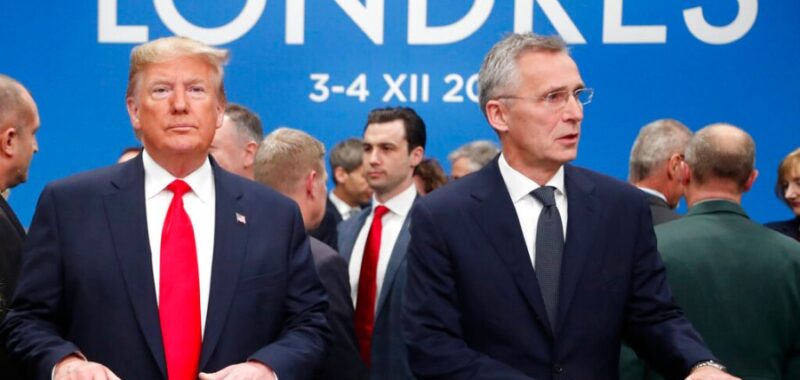
President-elect Trump faces two major challenges in his NATO and European foreign policy: developing a modern strategy for the alliance and securing enough support on Capitol Hill for his proposals.
His previous controversial plans to modernize the alliance laid the groundwork for much-needed reforms that will strengthen NATO’s capabilities and burden-sharing.
During his first term, Trump pushed NATO members to increase defense spending to meet the agreed-upon target of 2 percent of GDP. This pressure yielded results, with NATO reporting that European allies and Canada had added $130 billion in new defense spending by 2020. But burden-sharing remains uneven with the U.S. still shouldering 66 percent of the alliance’s $1.3 trillion defense expenditure.
Trump’s plan to relocate thousands of U.S. troops from Germany to Poland highlighted the need to realign NATO’s force posture. Although President Biden cancelled the move upon taking office, Trump aimed to position forces closer to potential hotspots in Eastern Europe while incentivizing Germany to boost its own defense capabilities.
While he may face challenges in fully withdrawing from NATO due to legislative restrictions, he could potentially “quiet quit” by reducing U.S. engagement without formal withdrawal. This approach might include reducing U.S. troop presence in Europe or limiting participation in NATO exercises and planning.
As he returns to office, Trump has an opportunity to build on his efforts from his first term and push for more comprehensive reforms such as:
Streamline decision-making: NATO’s consensus-based model often leads to gridlock. Implementing a qualified majority voting system for non-Article 5 decisions could enhance the alliance’s agility.
Enhance rapid response: Expanding and empowering NATO’s Very High Readiness Joint Task Force would improve the alliance’s ability to quickly address emerging threats.
Modernize capabilities: Increased investment in areas like cyber defense, artificial intelligence and space-based assets is crucial for countering evolving threats.
Strengthen partnerships: Deepening cooperation with non-NATO partners like Australia, Japan and South Korea can extend the alliance’s global reach and effectiveness.
Some will argue that Trump’s approach risks alienating allies and weakening the transatlantic bond. However, a 2022 NATO survey found that 62 percent of citizens across the alliance support increased national defense spending, indicating growing public recognition of the need for reform.
Additionally, Russia’s war in Ukraine has underscored the importance of a strong, unified NATO. Trump’s push for increased European defense spending and a more balanced sharing of responsibilities is more relevant than ever.
Trump’s vision for a restructured NATO, while potentially disruptive in the short term, offers a path to a more capable and equitable alliance in the long run.
However, implementing such changes may face resistance from both Democrats and some Republicans in Congress.
Key figures who could support Trump’s NATO agenda include Sen.-elect Jim Banks (R-Ind.) and Sen. Josh Hawley (R-Mo.). Both have been extremely supportive of Trump’s foreign policy as well as their skepticism of international commitments.
However, Sens. Mitch McConnell (R-Ky.) and Joni Earnst (R-Iowa) of the Armed Services Committee have been extremely supportive of NATO’s current structure and they may resist any drastic changes.
Trump’s ability to reshape NATO policy will depend on building coalitions within Congress.
The administration’s focus on burden-sharing and potential negotiations with Russia over Ukraine could create tensions with European allies and some members of Congress. Trump will need to navigate carefully between his desire for a reduced U.S. role in European security and maintaining support from defense-minded Republicans.
Trump’s NATO policy will likely involve a delicate balance between his personal vision and the realities of congressional politics, with the potential for significant debates over the future of transatlantic security cooperation.
By embracing reform and addressing long-standing issues, NATO can be stronger and better equipped to face the complex security challenges of our time. President-elect Trump has a unique opportunity to lead this transformation and secure NATO’s relevance for decades to come.
Matthew Shoemaker is a former intelligence officer with the U.S. Navy and the Defense Intelligence Agency and a former Republican congressional candidate. He was stationed with European Command and the NATO Intelligence Fusion Centre on the Russia desk providing the Supreme Allied Commander Europe and Allied Command Operations with timely, relevant and accurate intelligence.

